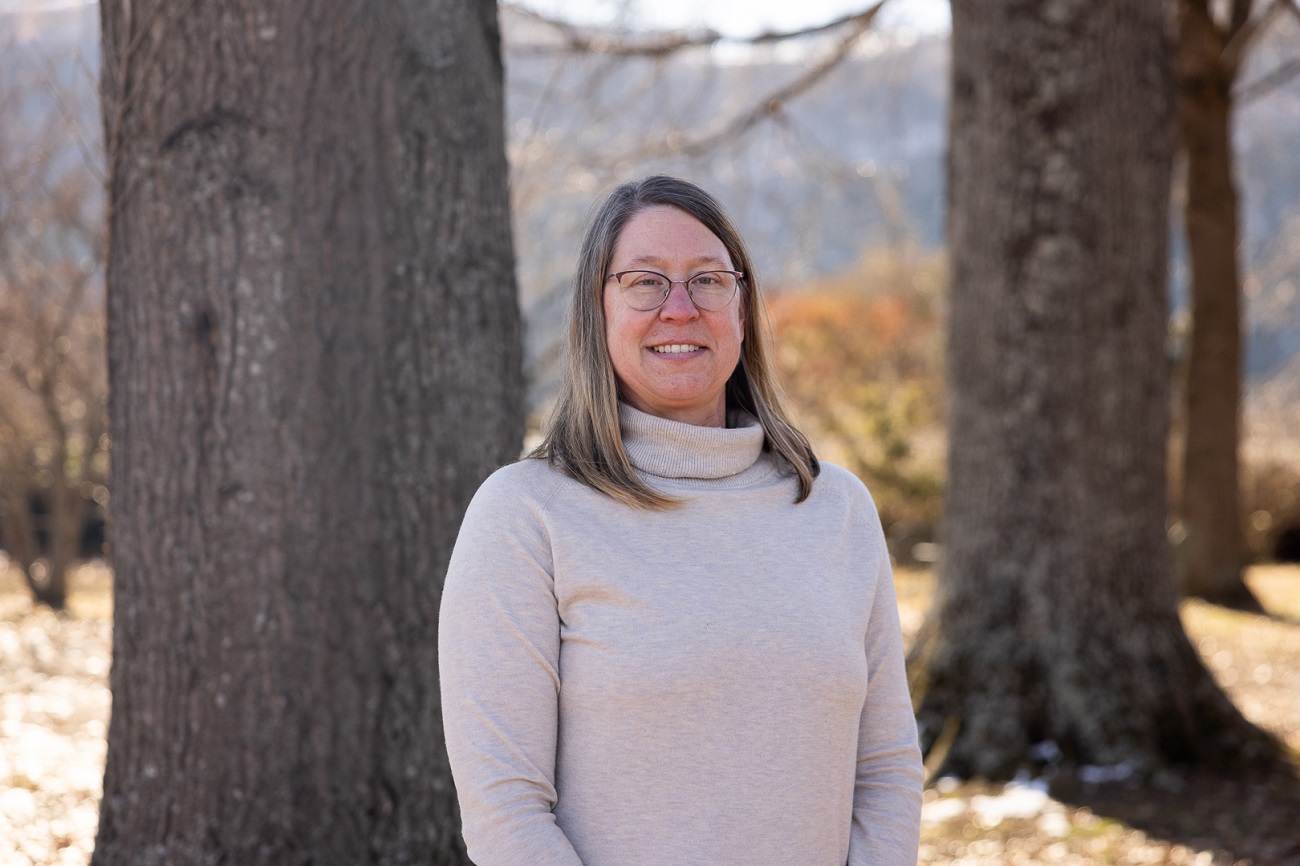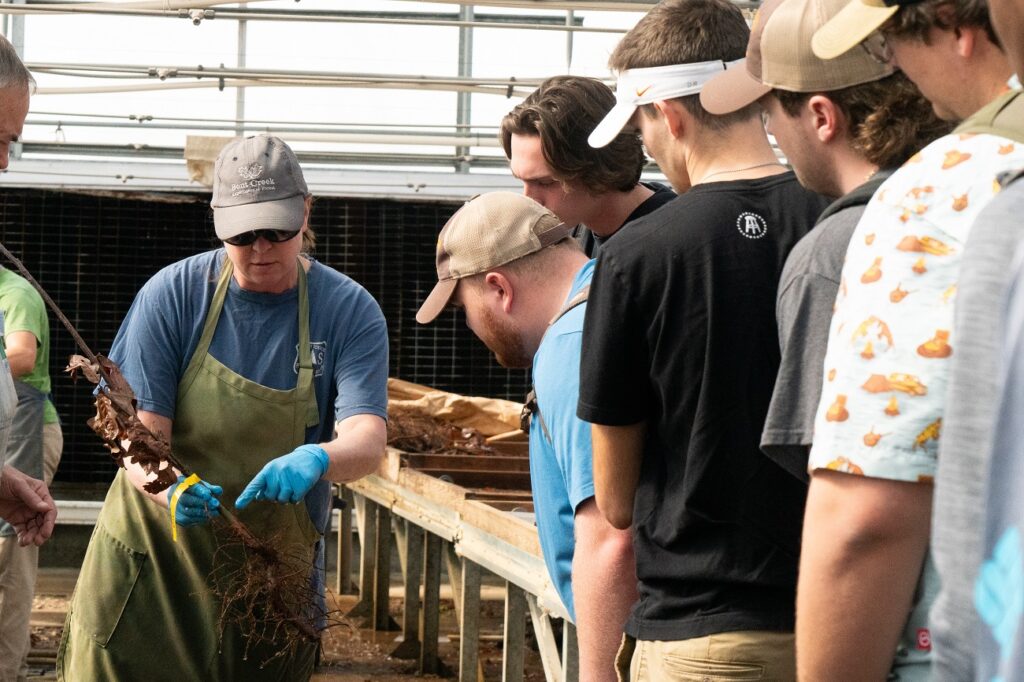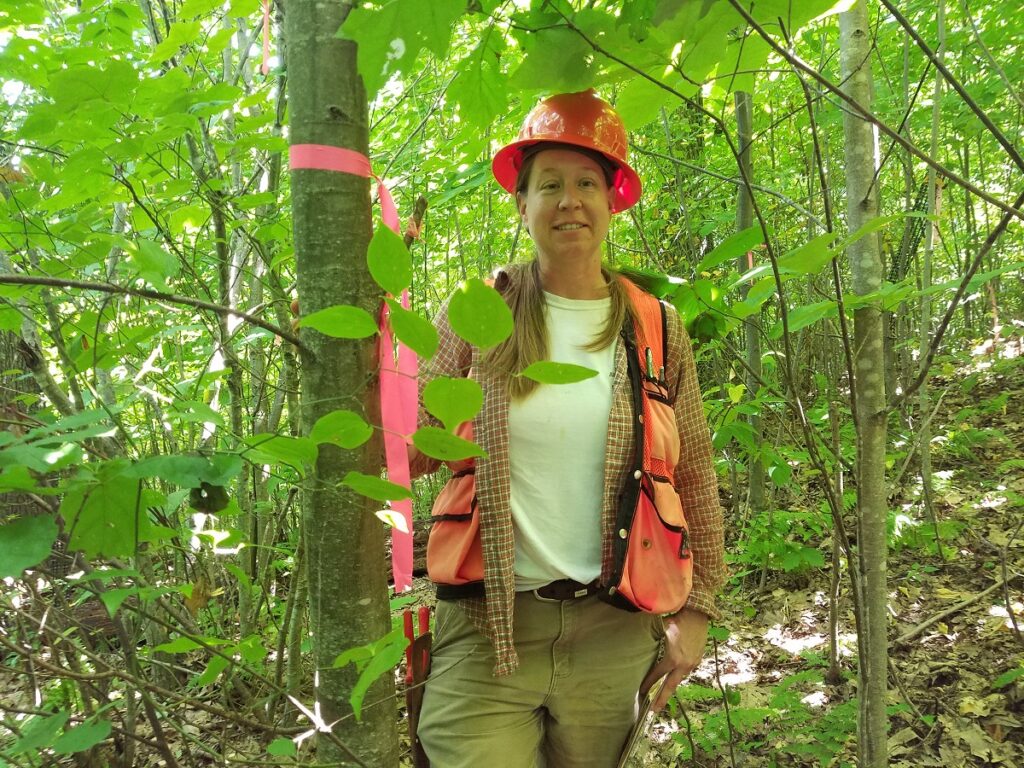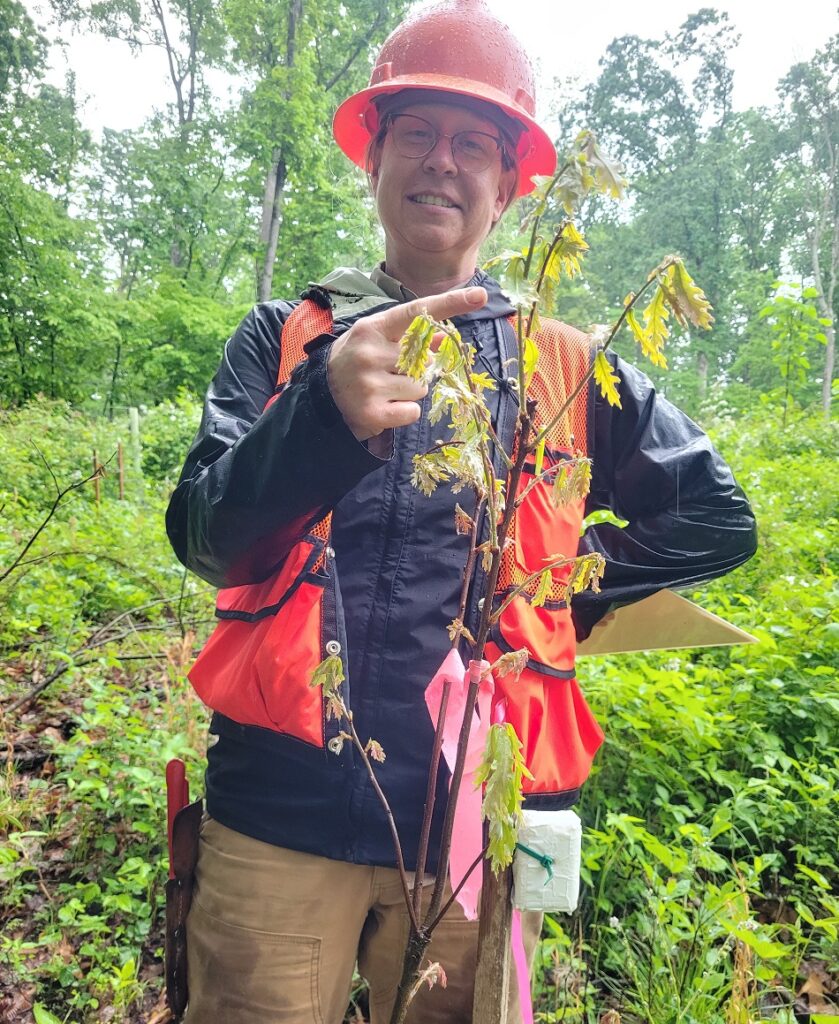
Forestry alumna (’96, ’99) advances hardwood forest conservation through research with the USDA Forest Service
Where are you from, and how would you describe your experience at the Herbert College of Agriculture?
I’m from Hixson, which is just north of Chattanooga, Tennessee. I was awarded some scholarships and federal grants to attend UT and pursue my degrees. My experience at the Herbert College of Agriculture was very good. I made lifelong friends and colleagues and was able to get the training and education necessary to move me forward in my career.
What degrees did you pursue and why?
BS in Forest Resource Management (1996); MS in Forestry (1999). I chose forestry because of my love for science and the outdoors. Forestry was the perfect combination. The Department of Forestry, Wildlife and Fisheries, now the School of Natural Resources, was focused on hardwood forests, which I felt set it apart from many other land-grant forestry programs that focused heavily on pine silviculture and timber production. I was far more interested in hardwoods because of their diversity in species and the inherent difficulties in managing such diverse and long-lived trees and systems.
Can you tell us about your current job and your career path leading up to where you are today?
I am a Research Forester with the Southern Research Station, USDA Forest Service. The Research and Development branch of the Forest Service is the largest forestry research organization in the world, and a research scientist is similar to a research professor in some respects. We conduct research 100% of the time and do not teach classes. However, we are encouraged to be on student committees, guest lecture, and have collaborations with universities. Many Forest Service scientists like me are stationed at land-grant universities for this reason – to promote collaboration.

I completed my BS and MS and then did a brief position with the UT Tree Improvement Program as a research associate working on white oak and sugar maple with the Jack Daniel Distillery. I decided to pursue a PhD (Oklahoma State, 2000) because I was very interested in applied science. The Forest Service scientist position was perfect for my resume and experience because it centered around upland hardwood silviculture, which is the ecosystem in which I was trained and educated.
What does a typical day in your life look like, and what do you enjoy most about the work you do?
This has evolved over the last twenty years. Early in my career, I was initiating a lot of field studies with very little support staff, so I was in the field much more than I am today. As I’ve accumulated support, research, and knowledge, I have moved towards synthesizing and sharing my findings with managers and other scientists and creating collaborations with multi-disciplinary partners that study things like insects, genetics, mycorrhizae, and pathogens. A typical day now involves communication and planning with partners, reading research articles, analyzing data, creating presentations, writing papers and reports, and most recently I was the primary leader of two significant international events: a special session on Castanea (chestnut) at the International Union of Forest Research Organizations World Congress in Stockholm Sweden in June 2024, and the International Oak Symposium that was held in October 2024 and hosted by the UT School of Natural Resources. I was the lead chair of the Symposium, which hosted a community of researchers and managers who represented ten countries represented and provided over 100 presentations. We also showcased our collaborative research with the Forest Resources AgResearch and Education Center in Oak Ridge.
What are the primary areas of research you focus on as a forester, and what challenges are you addressing in your work?
I primarily study upland hardwood ecosystems, and I specifically study two related genera that are in the same taxonomic family (Fagaceae): oak (Quercus) and American chestnut (Castanea dentata). All of my work revolves around using silviculture (the art and science of forest management to achieve desired objectives) to sustain or restore these species. We face many challenges. For oak, we have been in a regeneration and sustainability problem for many decades now, and it has only gotten worse with climate change, nonnative invasive pests and pathogens, and lack of management (or poor management). My research work unit has been tacking the oak regeneration issue for around 100 years.
American chestnut was a major component of our forests but was decimated by nonnative pathogens starting about 100 years ago. I am researching the restoration side of this problem: how do trees that are bred for disease resistance perform in ‘real-world’ settings? Because our forests are always changing, the problems shift, and we are always struggling to keep up. Good examples of that are global climate change that alters the environment in which the species are adapted and nonnative pests and pathogens that attack native species that often have little to no resistance (because they didn’t evolve with them).

Research is often slow and laborious, particularly in field research like silviculture, but it is absolutely essential to collect real field data and not rely completely on predictive models. Additionally, priorities from leadership and administrations shift resulting in reallocation of resources that can have varying effects on research programs that are meant to be sustained for the long-term. The longevity of Forest Service research is really what sets us aside from many university research programs.
What trends or advancements do you see shaping the future of forestry and forest conservation?
The future is becoming more virtual. This has some very important advantages and advancements in that we can use models and projections to help us make better decisions more efficiently, and we can also better visualize and predict how processes and management affect forests. For example, models exist to help us decide when we need to thin stands, how much litter a fire can be expected to consume, how much carbon trees sequester, etc. However, we still need field studies and field data. Models are only as good as the data they use, and since our world is ever changing, we will always need to keep our ear to the ground and eyes on the forest.

I think it’s a major mistake to move away from traditional field forestry and field research. If we lose our field ecologists, taxonomists, and foresters, we will have to reinvent them at some point, which will be incredibly difficult to do if all the education and infrastructure is gone. You can see this happening now with tree improvement programs. Tree improvement was one of the most widely taught and understood fields in forestry until around thirty or forty years ago. Government and universities cut their tree improvement programs because of rising costs, industry competition, and shifts in priorities. With more loss of entire species to nonnative pests and pathogens (American chestnut, hemlock, ash to name only a few), and with increasing demand on forests, tree improvement needs desperately to be revitalized, but it is incredibly difficult to do.
Can you share how your experience at UT impacted your life and career?
My education and training at UT provided me with the necessary skills and resources to become the scientist I am today. I was afforded opportunities, particularly with the Tree Improvement Program that taught me professionalism, writing skills, communication, and of course the basic forestry training that all foresters should receive.
What is one thing about your field that you think everyone should know?
Forestry is both an art and a science. You will never know it all, and that is what makes this field exciting and interesting from a science and management perspective.
What advice would you give to current students in the Herbert College of Agriculture who are interested in careers in forestry and environmental research?
Volunteer and reach out to as many professionals as you can. Hone your communication skills. Use the correct honorifics (Dr., Ms., etc.) when addressing professionals, and ask if you don’t know. When you do work with professionals, be ‘professional’. Come to work prepared (proper field work clothing, food and water, etc.), be on time, and complete tasks as instructed. Ask questions. Do not be afraid to seek new opportunities and to repeatedly put yourself out there. Professionals will see this work ethic and professionalism immediately, and oftentimes, that is more important than book smarts or having a particular skill. No one wants to work with someone who doesn’t communicate and can’t get to work on time.
What do you like to do outside of work and/or what is a fun fact about yourself?
I love outdoor activities like hiking, kayaking, camping, and backpacking. I also love supporting music and promoting local musicians. With my husband, we’ve hosted dozens of ‘house concerts’ at our home in Rockford since 2009 including some Emmy nominated and winning artists.
